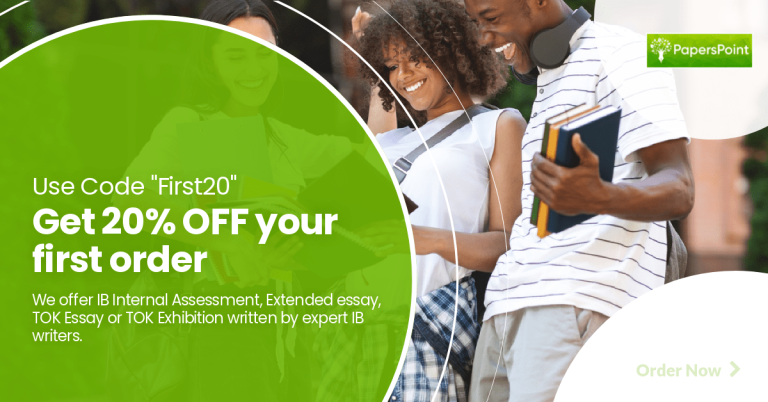When it comes to writing an IB Internal Assessment, it is essential to remember that the conclusion is just as important as the main body of the IA. A compelling conclusion will help you achieve a higher score, as it summarizes your findings, answers your research question, and leaves a lasting impression on your reader.
In this article, we will provide a step-by-step guide on how to craft a compelling conclusion for your IB Internal Assessment. We’ll discuss the importance of summarizing your findings, addressing your research question, and leaving a lasting impression on the reader. By following these guidelines, you’ll be able to write a conclusion that will earn you top marks on your IB Internal Assessment.
This article is a part of The Ultimate Guide to IB Internal Assessment: Tips, Strategies, and Best Practices
Summarize Your Findings
Summarizing your findings is a crucial part of writing a compelling conclusion for your IB Internal Assessment. Your summary should highlight the most important discoveries and findings in your IA, without simply repeating what you have already stated in the main body of your IA.
To start, take a step back and consider the research question you set out to answer. Then, review the main points and arguments presented in your IA. Identify the key takeaways that you want your reader to remember and highlight the most significant discoveries you made during your research.
It’s important to keep your summary concise and clear, using simple language and short sentences to make your points easy to understand. Avoid using technical jargon or complicated sentence structures that could confuse your reader or distract them from the main message.
When writing your summary, think about the tone and style of your IA as a whole. Ensure that your summary is consistent with the style and tone you have adopted throughout your IA, and that it accurately represents the content you have presented.
Remember, the purpose of the summary is to provide a quick overview of the most important aspects of your IA, so keep it brief and to the point. Your reader should be able to understand the key findings and takeaways from your research without having to read through your entire IA again.
Overall, summarizing your findings is an important step in crafting a compelling conclusion that showcases your understanding of the topic and the depth of your research. By highlighting the most important discoveries and presenting them in a clear and concise manner, you can demonstrate your knowledge and earn top marks on your IB Internal Assessment.
Address Your Research Question
Addressing your research question is a critical step in crafting a compelling conclusion for your IB Internal Assessment. It shows that you have fully understood the purpose of your research and have successfully answered the question you set out to explore.
To begin, revisit the research question you identified at the start of your IA. Restate it in a clear and concise manner, making sure that your reader can easily understand the focus of your research. Then, provide a brief analysis of your findings and how they relate to your research question.
Explain how your research has helped you answer your research question and provide insights that you have gained during your research. Use your findings to illustrate how you have successfully explored the topic and demonstrated a deep understanding of the subject matter.
If you were not able to answer your research question fully, do not worry. It is common to encounter obstacles during research that can prevent you from answering your research question completely. Acknowledge this in your conclusion but also explain what you have learned from your research and how it contributes to the field.
You can discuss how your research provides new perspectives on the topic, or how it raises new questions that require further exploration. This shows your examiners that you understand the significance of your research and have identified areas that require further investigation.
It’s important to remember that addressing your research question is not just about restating it and summarizing your findings. It’s also about providing a critical analysis of your research and demonstrating your ability to think deeply and critically about the topic.
By addressing your research question in your conclusion, you can showcase your understanding of the topic and the depth of your research. This is a crucial step in earning top marks on your IB Internal Assessment.
In summary, addressing your research question is an important part of crafting a compelling conclusion for your IB Internal Assessment. By restating your research question, providing a brief analysis of your findings, and explaining how your research has contributed to the field, you can demonstrate your understanding of the topic and earn top marks on your IA.
Get Help with Your Paper
Fill out the order form, and our writers will start immediately. You’ll get a unique, high-quality paper on time, even if you’re in a hurry.
Leave a Lasting Impression
The final step in crafting a compelling conclusion for your IB Internal Assessment is to leave a lasting impression on the reader. This is your opportunity to summarize the significance of your findings and make a final statement that your reader will remember long after they have finished reading your IA.
To make a lasting impression, start by summarizing the significance of your findings. Explain how your research has contributed to the field and why it is important. Use your research to highlight the key takeaways that your reader should remember and emphasize the implications of your findings.
Next, provide recommendations for future research. This shows that you have thought about the implications of your research and have identified areas where further investigation is needed. Your recommendations should be specific and focused on the areas where your research has raised new questions or identified new areas of study.
It’s important to ensure that your final statement is clear, concise, and memorable. Avoid making broad, sweeping statements that are not supported by your research. Instead, focus on the specific findings and implications of your research. Use language that is easy to understand and avoid technical jargon or complicated sentence structures.
It’s also essential to remember that your final statement should be based on the content of your IA. Don’t introduce new information or ideas that have not been discussed in your IA. Instead, focus on the most important findings and implications of your research.
By leaving a lasting impression on your reader, you can demonstrate your understanding of the topic and the depth of your research. This is a critical step in earning top marks on your IB Internal Assessment.
In summary, leaving a lasting impression on the reader is a crucial part of crafting a compelling conclusion for your IB Internal Assessment. By summarizing the significance of your findings, providing recommendations for future research, and making a clear, concise, and memorable final statement, you can demonstrate your understanding of the topic and earn top marks on your IA.
Topics to Read:
Conclusion
In conclusion, crafting a compelling conclusion is crucial to achieving a high score on your IB Internal Assessment. By following the steps outlined in this article, you can write a conclusion that summarizes your findings, addresses your research question, and leaves a lasting impression on your reader.
Remember to keep your summary concise and clear, provide insight into how your research has helped you answer your research question, and make a final statement that discusses the significance of your findings and provides recommendations for future research. By doing so, you can demonstrate your understanding of the topic and earn top marks on your IA.
It’s important to take the time to craft a compelling conclusion that accurately represents the content of your IA. This requires careful planning, organization, and attention to detail. By following the steps outlined in this article, you can ensure that your conclusion meets the expectations of your IB examiners and earns you the highest possible score.
In summary, writing a compelling conclusion for your IB Internal Assessment is a critical part of the process. By summarizing your findings, addressing your research question, and leaving a lasting impression on your reader, you can demonstrate your understanding of the topic and earn top marks on your IA. So take the time to craft a well-written conclusion and showcase your knowledge and skills to the IB examiners.



